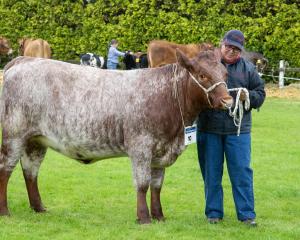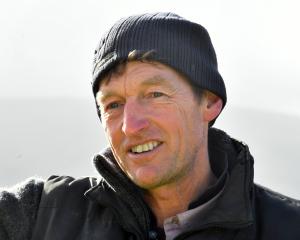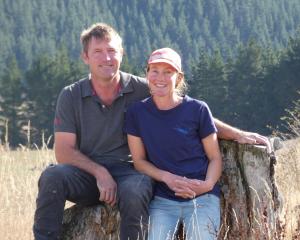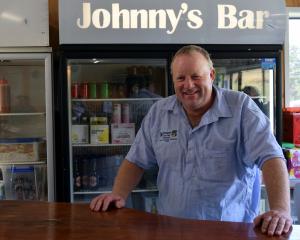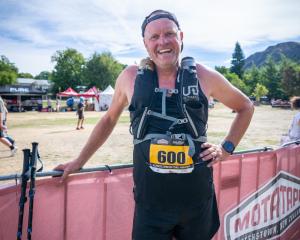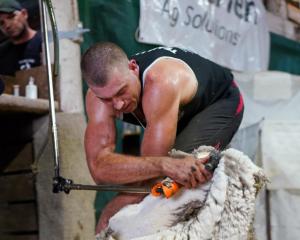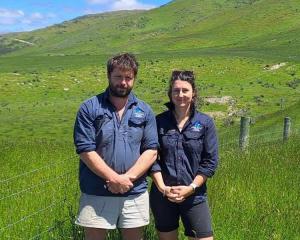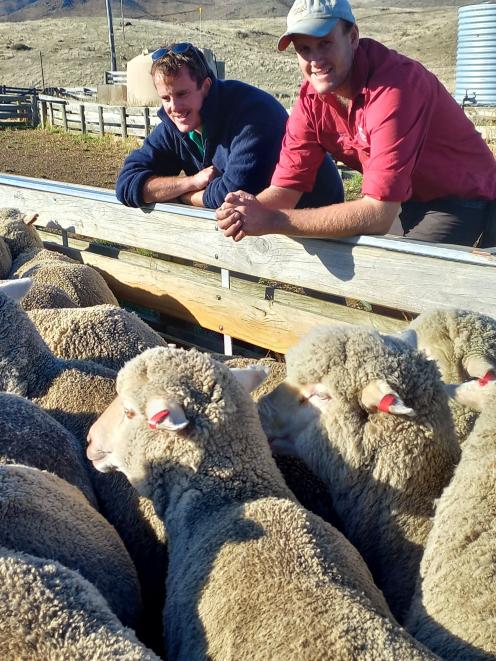
Australian farmer Andrew Rolfe reckons he learned much more in his first two years of farming on his own account — "in business, in life skills, relationships, the whole thing".
Mr Rolfe, from Cooma, New South Wales, has been in New Zealand this month as part of his Nuffield Scholarship studies.
After going through family succession, Mr Rolfe bought half the farm out from his parents and added some more land, totalling 3000ha. For the first couple of years, he ran 9000 composite ewes which, systems-wise, was hard, he recalled.
His first year of farming also coincided with the perfect farming storm; interest rates went up while commodity prices went down and the property was plagued with drought.
It was also a big change; he had gone from working with his parents on the family farm to taking on a lot of debt with his own property and scaling it up very quickly.
So he swapped back to straight merino wethers, running about 20,000, and did away with four staff, preferring to concentrate on running a lean, low-input system, and bringing in contractors and casual staff when needed. At the moment, that approach was working — "I’ll see how far behind I get", he said, laughing.
The simplification of the farming system also meant it was more resilient and that was the subject of his Nuffield studies: building resilient systems in farming.
Asked why he applied for a scholarship, Mr Rolfe described the programme as a "key to the world", saying where else was there an opportunity to travel the world, looking at different farming operations, different industries, and making contacts.
Each scholarship was valued at $40,000 and open to those directly involved in food and fibre production and typically to those aged from 28 to 45. The bursary allowed scholars to travel overseas both individually and in small groups.
He was visiting the United Kingdom, the Netherlands, Canada, the United States and New Zealand and he hoped to also fit in a trip to South America.
One of the best parts was the lessons learned that were not expected. From visiting such diverse enterprises as a large-scale turkey farm to an Amish property, there were lessons in all the places. He had respect for all the different environments and contexts, he said.
He was also looking at governance in the various countries; in Australia, he felt fortunate farmers were not over-governed. All farmers had challenges, they were just different.
Mr Rolfe had been in New Zealand in 2013 as part of an Otago Merino Association Cecil Brown Scholarship so it was great to get back to reacquaint with people he had previously met, including Gundy Anderson, at Bog Roy Station, in the Waitaki Valley last week.
The trip last time fired him up although much had changed since then, including getting married and having children.
The merino industry in Australia was at a crossroads and the sheep industry in general was similar to what New Zealand was experiencing, he said. The biggest issues were labour — and not being able to scale up without additional labour — shearing and pests. Farmers in his area were dropping sheep in preference to cattle.
There were "big ups and downs" in the area so it was about building a system that could handle two or three years of solid drought. Because he was buying only wethers, he could keep them at maintenance and he used wether trial data to purchase them, buying the top end of genetics.
It had been very dry on the farm and, while there had been 40mm several weeks ago, his moisture probes were still showing 0% moisture. The growing season was over and there would not be any more growth until the spring.
Mr Rolfe was using a containment feeding system, something which was becoming increasingly popular as it protected ground cover and built a feed wedge coming into the spring.
The sheep were put into about 1ha pens where they were fed and watered. The system could be as simple or advanced as the farmer wanted. It was good for the sheep as they utilised less energy and there were animal welfare benefits as anything amiss could easily and quickly be picked up.
Merinos were a resilient animal "in their own way" and the fibre they produced was "pretty special stuff". While there was quite a swing to a dual-purpose merino, he did not have to worry about lambs — it was all about wool production and producing the most wool at the finest possible point.
"I’m all about wool cut and micron", he said.
The Nuffield experience showed a different way of looking at things, and things you could do to make a difference and he was energised and enthusiastic after his visits.
He visited a farm in Kansas which started with 10,000 acres and, in 14 years, had scaled up to 100,000 acres, as well as having about four side businesses. The owners borrowed hard and worked hard and it was inspiring.
Mr Rolfe said he was always looking for solutions. Initially, he thought he did want scale but, having been burnt out, he was not sure if that was the case now.
The future of agriculture was going to involve change and the likes of the advent of chemical shearing and robotic weed spraying might well change things. There were also opportunities in other industries.
He wanted to get to the point where he was able to employ somebody on the farm to allow him to "chase other things or more scale". "I’m a big-picture thinker."


